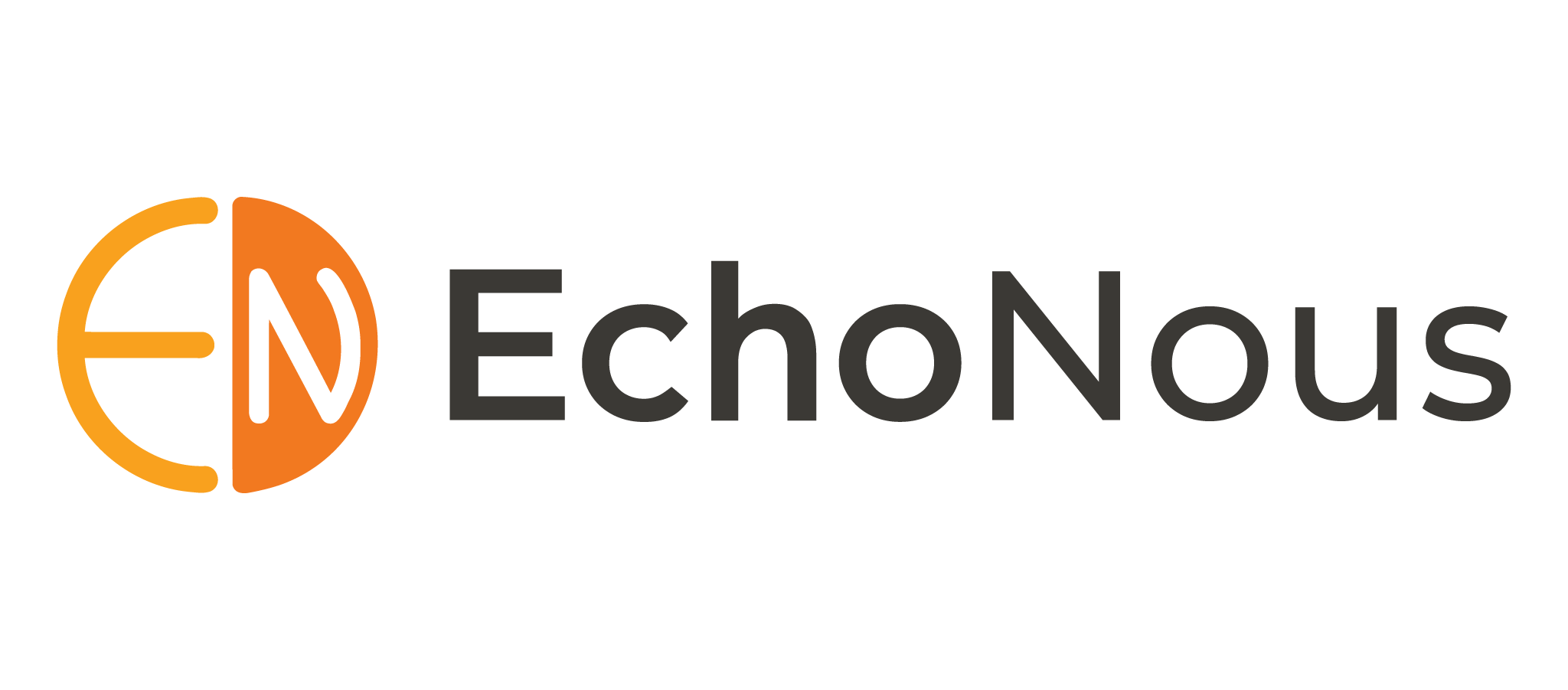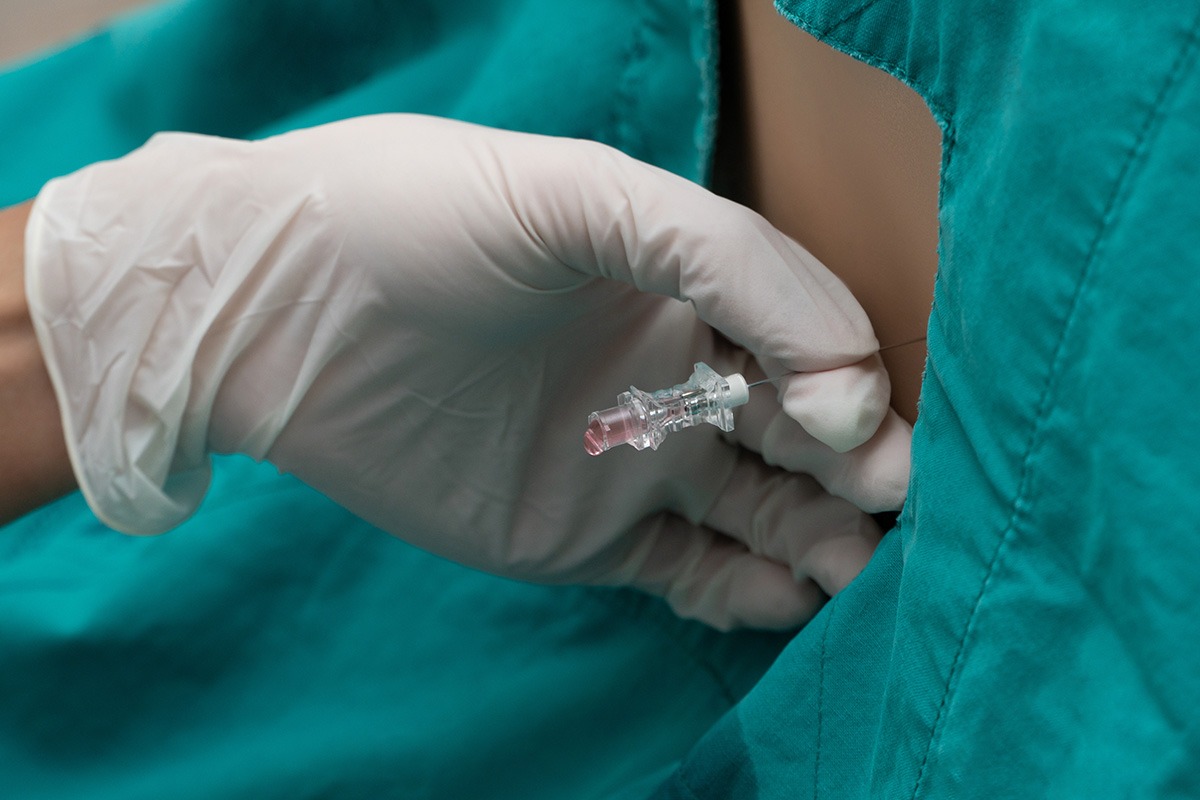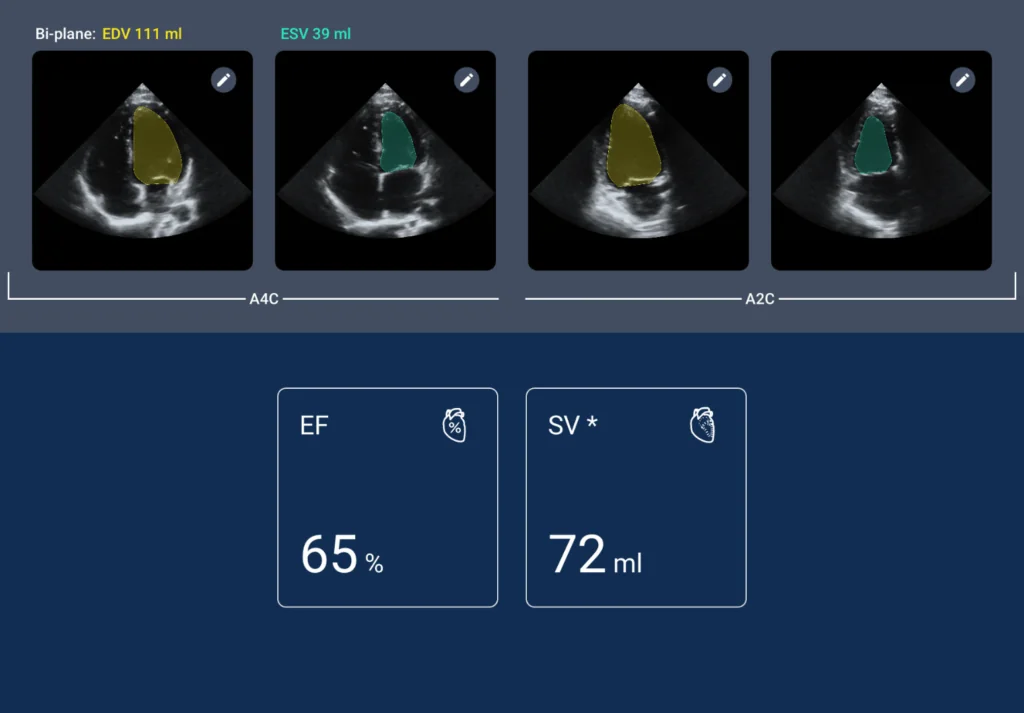Exploring the Intersection of Nephrology and Point-of-Care Ultrasound, Pt. 1: A Conversation with Dr. Eduardo Argaiz

Dr. Eduardo Argaiz
MD, PhD

Luke Baldwin
VP of Global Marketing, EchoNous
Luke Baldwin, VP of Global Marketing at EchoNous, recently connected with Dr. Eduardo Argaiz, MD, PhD, a highly-regarded figure in the field of nephrology, well known for his expertise in hemodynamic assessment and the application of Point-of-Care ultrasound (POCUS) within his discipline.
[Note: This interview has been edited for clarity and brevity.]
Introduction
Dr. Argaiz’s journey into the realm of nephrology and POCUS began with a chance encounter with a podcast featuring VExUS pioneer Dr. Philippe Rola, leading to a series of discoveries and collaborations. In this enlightening Q&A, Dr. Argaiz shares his insights into the evolution of POCUS in nephrology, social media’s role in medical education, and the future of hemodynamic assessment in patient care. Join us as we delve into the world of nephrology and POCUS with Dr. Eduardo Argaiz in part one of this wide-ranging interview. Stay tuned for part two.
Journey and Background
Luke Baldwin: Dr. Argaiz, could you walk us through your journey into the field of nephrology, your background, and how you became involved in point-of-care ultrasound (POCUS)?
Eduardo Argaiz, MD: My name is Eduardo Argaiz, and I’m originally from Mexico City. I’m a Mexican-trained physician and completed medical school here in Mexico. After that, I did a four-year PhD in molecular biology, which was different from the clinical work that I wanted to do. Towards the end of my PhD, I realized I wanted to return to the clinic.
So, I began my residency around 2016-2017. During my second year as an internal medicine resident, I stumbled upon a podcast by Philippe Rola, who I thought was some random guy at the time. He works in Montreal, Canada, at Santa Cabrini Hospital. He was recording a podcast about how he manages heart failure patients by doing a portal vein Doppler examination to see whether the patient has [fluid] volume overload or not.
I remember thinking this was crazy; who was doing this? I read all the literature on heart failure, and nobody’s mentioning the portal vein, so this Philippe Rola guy must be crazy. I didn’t know him at the time. So, something incited my curiosity; I always say this was Philippe. We had a small point-of-care ultrasound machine at our shop, which was mainly used for procedures. But I happened to have a phased array probe, and I started trying to get the portal vein of every patient who came to my shop in the emergency department.
At first, I could not get it. I tried it for about one month, and I could not get the Doppler examination until I saw a video online, as Philippe Rola was doing it in a tutorial demonstration. So, I just started doing it, and I believe it was for a couple of months, where I was taking portal and hepatic vein Doppler tracings of every patient that came to the hospital.
Then I came to learn that sometimes I could diagnose severe venous congestion and heart failure, and none of my other physician teammates would realize that this patient has congestion and would manage the patient very differently. So, this has started making sense to me. We may need to be more careful when we examine patients, and we may need more technology to do this.
So, I started sharing my experience on social media, especially trying to get Philippe Rola’s attention because I wanted him to see whether I was doing the right thing or not (this was maybe 4-5 years ago), and Philippe Rola was very kind. He responded with a lot of knowledge. He actively shared tips and how he does things and coached me remotely from Canada.
We got to collaborate a lot, so we wrote our first case series using portal vein Doppler to manage patients with cardiorenal syndrome. I told Philippe, I think this is novel; let’s take this to a national meeting. So, we wrote an abstract in February 2020, right before the pandemic hit, so I went to Florida and presented our first case series of portal vein Doppler in cardiorenal syndrome titled Dynamic Changes in Portal Vein Flow during Decongestion in Patients with Heart Failure and Cardio-Renal Syndrome: A POCUS Case Series, and we won the best abstract in the meeting.
Then we started getting a lot of attention, so I started my formal training with ultrasound because I knew I would need this to continue my career. I got away from research in molecular biology. I thought I would do mainly clinical work, and now I’m doing both. Now, I’m doing POCUS-based research, especially in the field of cardiorenal and venous congestion and heart failure.
So, from then on, I started learning more POCUS at the bedside. The Argentinian Society of Ultrasonography mainly taught me. I took all their courses, and then, it turns out, I think I have a gift for it because now I’ve become a professor in the ASARUC community, the Argentinian Society of Critical Care Ultrasound.
Also, since I went into nephrology in the end, well, then, this is a field where nobody was using point-of-care ultrasound despite its universal adoption in other specialties like emergency medicine and intensive care Together with my friends [Dr] Abhilash Koratala, who is in Milwaukee, and [Dr] Nathaniel Reisinger, who is in Pennsylvania. We began developing the field, pushing the boundaries of what can be done with ultrasound in nephrology. We’ve found a lot of success. Our patients have noticed the difference in care, and we’ve become very precise at hemodynamic assessment, especially for very complex patients, such as our patients with chronic kidney disease and complex heart disease.
The Rise of POCUS: From Medical Journals to Social Media Renown
Luke Baldwin: Wow, it’s been quite a journey for you in the last ten years since you started. It’s interesting to see how you’ve gained an international reputation through speaking engagements at various conferences; you’re speaking all over the world. What do you think makes your journey unique compared to others?
Eduardo Argaiz, MD: I understand your question, but social media has changed how you can present your ideas to the world instead of the classical pathway for medical success and research.
In the past, acquiring some degree of fame was about hitting the ground, grinding, publishing, and trying to get all your research papers in the highest impact journals. Then, you need to know the right people to get invited to important meetings, which could take more than ten years. Nowadays, we can translate our knowledge immediately, following ethical guidelines and sharing some clinical cases with patients’ consent; we can reach way more people instantaneously. You know the beauty of point-of-care ultrasound (POCUS) is that we can share these images, which was not possible before.
Maybe you can share a clinical case you’ve found interesting. Then, you can describe what you heard during a physical examination and what you felt when examining the patient. Still, nothing compares to the impact of sharing the image of the findings and how that changed management. I believe this resonates with many because it prompts them to realize the importance of incorporating POCUS into their practice. Sharing clinical cases on social media has allowed us to reach a broader audience and garner more engagement than traditional academic publishing.
I believe my message resonated with many people because it made them realize that their practice was incomplete without a point-of-care ultrasound-enhanced physical examination. The ability to share this on social media helped launch my career faster than it should have. Many physicians listened and tuned into our clinical cases, learning a lot and getting a lot of engagement. This is way more than you would get from a publication in any classical medical journal. Our clinical cases are getting thousands of views, reaching many more people than we could have through traditional academic paper publishing pathways.
POCUS Integration and Evolution in Medical Specialities
Luke Baldwin: I was around when the FAST Exam and Point of Care Ultrasound (POCUS) were growing in popularity. POCUS was most rapidly adopted in emergency medicine, and when people thought of it, they would think of the FAST Exam. However, VExUS, as another ultrasound protocol, exploded in popularity fast.
I’m unsure if it’s fair to say that an ultrasound protocol can “trend.” Still, it has become a helpful protocol in determining a patient’s fluid status and understanding whether the heart is causing the congestion.
Do you attribute that to this day and age where social media can spread quicker, or was VExUS a solution to a problem people were trying to figure out that hit the right time and place? Can you help me understand?
Eduardo Argaiz, MD: I think it just hit all the right notes. The problem was that people were eager to find a more specific way to assess patients, especially since volume status and evaluation in patients with heart failure is so complicated, especially [with] a classical physical exam [and] conventional chest X-ray, and so the necessity was there.
Technology has moved on, so now we have access to point-of-care ultrasound, and maybe some physician has a friend that has a portable point-of-care ultrasound machine and has realized maybe I should have that; maybe that has made them more interested.
Now that the technology allows them to see that they could also perform this at the bedside, even in their own clinics, even when they don’t have, you know, a large, dedicated machine for this.
So, the necessity for better patient assessment and the technology that allowed portable point-of-care ultrasound devices to become widely available created this sense of thirst and hunger for people to learn and understand this technology.
I would compare this with how lung ultrasounds were done by Dr. Daniel Lichtenstein back in the day. When doing point-of-care ultrasound of the lungs, nobody believed he could get any useful information; he was denied publication in several journals. He couldn’t get his papers published. He had to write a book. There was no social media then, so he had to write a book.
Then the book got very popular, and that’s how lung point-of-care ultrasound started, not through the main classical channels of scientific journals but through a book. It became very popular, people started reading this book and realized, oh this is true; I’ve got to do this, and now the journals want to publish it because it’s very trendy, and this is the same thing that’s happened with VExUS, of course in a smaller scale.
Initially, we found it hard to publish anything related to venous Doppler-related congestion assessment. Now, it’s become more widely accepted and trendy. We’re getting more acceptance in our publications, and editors are asking for it.
The Role of POCUS in Nephrology: Enhancing Diagnosis and Patient Care
Luke Baldwin: Oh, wow, that’s fascinating! I hadn’t heard about Dr. Lichtenstein’s struggles with publishing, but I know his significant contributions to lung imaging. It’s incredible how challenging it was for him initially. Nowadays, with the ability to rapidly share and receive feedback, like you mentioned, medicine can progress much faster in this day and age.
Eduardo Argaiz, MD: Everything comes with a caveat, and every new protocol and technology must be carefully tested [through] clinical trials. I mean, for sure, we are generating the evidence, still, the popularity of this technology has surpassed the velocity at which we can produce clinical research.
Anybody who does the VExUS protocol [will] tell you that they’re finding it very useful in their clinical practice. I think experts in heart failure and nephrology and intensive care will all say the same thing, “Yes, it has helped me. My patients are doing better, the signal is there.” This protocol is going to likely end up, you know, helping a lot of patients and improving patient care. Still, the evidence is lagging, so now the outstanding efforts of our community are just trying to generate this evidence, you know, in the hopes that we can definitively prove that the addition of Doppler will improve patient outcomes.
Luke Baldwin: So, you mentioned your specialization in nephrology. How would you explain the role of point-of-care ultrasound to nephrologists who may still be unsure of its value? How does it integrate into your approach when treating patients? In other words, where does point-of-care ultrasound fit into your toolkit as a nephrologist?
Eduardo Argaiz, MD: Nephrology has significant applications for point-of-care ultrasound, especially in interventional nephrology. This branch specializes in procedures like placing central lines, tunnel catheters, and peritoneal dialysis catheters and assessing arteriovenous (AV) fistulas for dialysis.
That’s well developed in the field of nephrology, so if you talk to an interventional nephrologist, of which there are several, and there are several associations of international interventional nephrology in the world, the use of ultrasound is ubiquitous; they use it for ultrasound-guided placement of central venous catheters and peritoneal and dialysis catheters.
The assessment of the AV fistula, of course, needs to be done by Doppler because this is a large arterial venous communication that needs to be assessed in terms of how much flow it has, what the diameter is, whether there is stenosis, and whether there are collaterals. So, for the field of interventional nephrology, which is a fascinating field, I would say the point-of-care ultrasound is already established, and it’s already a reality. Every shop in every place in the world is definitely using ultrasound, for example, for guiding kidney biopsies as well.
The other [method of using] point-of-care ultrasound in nephrology has seen serial development up until a couple of years ago, and that’s using point of care ultrasound to enhance your physical examination of a complicated patient.
POCUS in nephrology is especially relevant because nephrologists are consulted whenever the kidneys stop producing urine. The most frequent cause of oliguria (when the kidney does not produce urine) is a hemodynamic alteration, so this could be hypovolemia, sepsis, distributive shock, cardiogenic shock, or venous congestion. With any hemodynamic derangement that would eventually terminate in shock, the first clinical manifestation is oliguria or acute kidney injury (AKI), and so you see the nephrologist gets consulted because of a bump in creatinine or oliguria.
You know, traditionally, the nephrologist would look at the urine examination, and the patient would say this looks prerenal, which is a term that I do not like. I’m trying to switch the term prerenal to hemodynamic acute kidney injury. Still, back in the day, they would call this prerenal acute kidney injury, and then maybe the job of the nephrologist would be done.
They would say, the kidney is fine, something else is causing this bump in creatinine, something else is causing this oliguria, and I will not get involved, and you know, but then who would get involved?
The patient was not critically ill enough to be in the critical care unit, and intensivists were uninvolved. The patient is not in the emergency department. Nephrologists are not involved.
Then, most internal medicine departments have not developed point-of-care ultrasound programs, so you know there’s a significant deficiency on accurate assessment of acute kidney injury. That’s the job of the specialist who gets consulted for this.
With point-of-care ultrasound, we are elevating the game. We are not only saying this is a prerenal acute kidney injury; we are saying this is a hemodynamic acute kidney injury and is mediated by, you know, a myriad of different conditions, especially venous congestion, hypovolemia, distributive shock, septic shock, or obstructive physiology.
Of course, this is revolutionizing our practice because this is the main reason for consultation. If you look at the curriculum, an average nephrologist is heavily oriented towards renal pathology. For example, this is always a joke that my friend [Dr] Abhilash Koratala makes: we are experts in renal pathology where we rarely actually see patients with complex glomerular disease, and we get consulted every day for patients with cardiorenal syndrome, so how are we experts in looking at the microscope at kidney slices and we are not experts at looking at the heart and the hemodynamics and the cardiac output and venous congestion, which are the things that are dictating how the kidneys are doing?
So, this is changing the field. I would say for people who are nephrologists and are still on the fence of whether this is helping patients or not, well, this new, you know, the essential book or textbook in nephrology, which is Brenner and Rector’s “The Kidney,” the latest edition which is coming this year will contain an entire chapter of point-of-care ultrasound in nephrology that is written by my friend Abhilash Koratala and my friend Nathaniel Reisinger and myself. We are now creating a textbook reference that all nephrologists can access and will, you know, probably become more interested in point-of-care ultrasound.
This conversation with Dr. Eduardo Argaiz continues in part two, where he explores how nephrologists can get started with ultrasound and use POCUS for more than imaging alone.
To learn more about Kosmos, contact us today!




